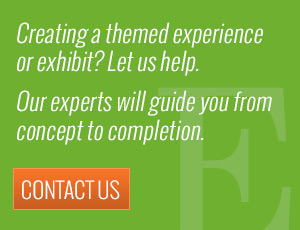How 3D Printing is Rebuilding Destroyed Artifacts – And What It Means for Preservation
Posted by Sasha Bailyn on Monday, July 18th, 2016

3D printing has applications beyond printing food and fashion; it’s actually helping to address some of the most tragic issues affecting the museum world. The world is an unpredictable place, and political strife has often led to the destruction of important historical artifacts. While this has historically been a problem associated with war, losing vital artifacts hampers our connection with the peoples of the past and forever limits scientists’ and archaeologists’ ability to conduct research on those time periods. In February 2015, Islamic State militants (also known as ISIS) systematically ransacked and destroyed the Mosul Museum in Iraq. According to later reporting and eye witness accounts, they used sledgehammers and drills to destroy immense numbers of artifacts and pieces, all carved from limestone around 860 B.C.
In the past, society’s response to this dismantling of culture was limited – beyond expressing sorry. After all, how do you rebuild something that is thousands of years old, once it has been willfully destroyed? Luckily for the museum industry and for future generations, innovative researchers and students have helped reclaim some of the past through the creative application of 3D printing.

After the Mosul Museum crisis, The Initial Training Network for Digital Cultural Heritage (ITN-DCH), of the Marie Curie Actions training project, stepped in with Project Mosul. Project Mosul is an incredible program designed to help people reconnect with the lost treasures, through interactive social sharing and 3D technology.
The ITN-DCH teamed up with the organization Rekrei, which specializes in restoring cultural heritage through photogrammetric reconstructions (3D printing). The project uses crowdsourcing to build a database of images involving any destroyed artifact, measures the exact dimensions, and then uses 3D printing to recreate the piece. The final products were eventually showcased in the NYC-based Museum of Arts and Design (MAD).
The group is mostly comprised of students and volunteers, and works under the careful watch of a few industry experts. Founded in March of 2015, it took students less than 2 weeks to get Rekrei up and running, and it is the largest photogrammetry initiative to date. This year, the group has acquired over 5,000 images from over 40,000 unique visitors to the site. They have used society’s cultural contribution to recreate more than 40 artifacts that were destroyed by ISIS. The Economist Media Lab is also creating a virtual reality version of the Mosul Museum, based on these images and reconstructions.
Virtual reconstruction is being used by museums to not only recreate lost or stolen items, but to enrich the overall guest experience. Photogrammetry is quickly entering the toolkits of innovative curators. There is a variety of ways in which the technology is utilized:
Changing Policies: Although “no photography allowed” has often been a formal rule in museums, restrictions are waning. Organizations realize they can’t fight the population, and the social implications of photo sharing are a marketing dream for organizations that are fighting declining attendance. When the museum recreates a piece with 3D technology, they own the rights to it and they can allow visitors to snap away, with no risk of damaging a priceless item. The Rijksmuseum in Amsterdam, for example, has employed 3D technology in most of their pieces, and thoroughly encourages visitors to take pictures of everything. The overall shift in the photography policy not only helps to market the museum, but creates a deeper cultural experience for the guest.
Creative Engagement: Artwork can act as a conversation piece, and as visitors engage more deeply with an item, they are more likely to talk about and share their experience with other potential visitors. 3D technology enables different types of engagement with a museum’s pieces, which increases a visitor’s dwell time. This kind of lingering can promote social interaction both in the gallery and online. The ambience of the museum changes from stuffy to fresh and innovative with the advent of 3D reconstructions. Knowing there is no possible way to damage the piece puts visitors at ease and allows them the time to further study the item. Deeper engagement leads to more social promotion, and ultimately, higher attendance. In some cases, museums are using 3D printing to also allow for tactile exploration and eliminating the stigma of “please don’t touch the artifacts!”
Finished Model: For the first time in the history of exhibits, visitors can now see a broken or damaged item in its entirety. 3D printing allows curators to make artifacts and pieces whole again, whether that involves replacing an arm on a statue or recreating a clay pot that has been smashed for thousands of years. A full 360 degree scan produces a 3D print that can be closely scrutinized and reproduced. At times, the final model can be much more complete than the original. The print can be modified, shared, and even joined with other models to create a unique experience for guests. Throughout the process of sharing and change, the artifact can be traced, mapped, and analyzed like never before.
3D printing has numerous applications, but aiding in preservation is one of the most exciting. There’s no better way to enrich ourselves in history than total immersion. There are a variety of practical applications for photogrammetry, but it also has a deeper, cultural contribution. 3D technology has managed to turn a complete loss, such as with Project Mosul, into a new and engaging experience. The most important implication of this technology means never having to tell your children they can’t experience a destroyed artifact first-hand. Our ability to focus on preservation, even in the face of willful destruction or natural disasters, has increased exponentially.



 Sign Up For Our Newsletter
Sign Up For Our Newsletter .JPG?1426798738)




